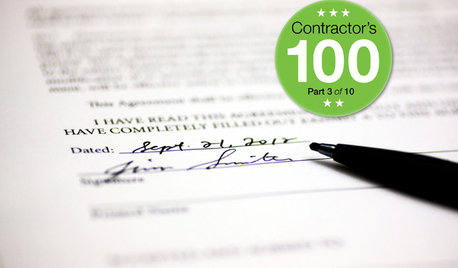Contract fell through--well water!
Eden-Manor
10 years ago
Featured Answer
Sort by:Oldest
Comments (19)
Eden-Manor
10 years agolast modified: 9 years agoRelated Professionals
Asbury Park Architects & Building Designers · Hockessin Architects & Building Designers · Winchester Architects & Building Designers · Cumberland General Contractors · Dorchester Center General Contractors · Dothan General Contractors · Evans General Contractors · Murrysville General Contractors · Parkersburg General Contractors · Syosset General Contractors · Wright General Contractors · Lincolnwood Home Stagers · Spring Valley Home Stagers · Clinton Township Interior Designers & Decorators · Mount Sinai Interior Designers & Decoratorsdekeoboe
10 years agolast modified: 9 years agoEden-Manor
10 years agolast modified: 9 years agoliriodendron
10 years agolast modified: 9 years agoUser
10 years agolast modified: 9 years agobrickeyee
10 years agolast modified: 9 years agoUser
10 years agolast modified: 9 years agoEden-Manor
10 years agolast modified: 9 years agoliriodendron
10 years agolast modified: 9 years agoUser
10 years agolast modified: 9 years agoevaf555
10 years agolast modified: 9 years agoncrealestateguy
10 years agolast modified: 9 years agodekeoboe
10 years agolast modified: 9 years agobrickeyee
10 years agolast modified: 9 years agojane__ny
10 years agolast modified: 9 years agoEden-Manor
10 years agolast modified: 9 years agoliriodendron
10 years agolast modified: 9 years agoEden-Manor
10 years agolast modified: 9 years ago
Related Stories

LANDSCAPE DESIGNHow to Move Water Through Your Landscape
Swales, underground pipes or a mix of both: There’s more than one way to distribute water in the garden
Full Story
CONTRACTOR TIPSWhat to Look for in a Contractor's Contract
10 basic ingredients for a contract will help pave the way to remodel happiness
Full Story
BUDGETING YOUR PROJECTConstruction Contracts: What to Know About Estimates vs. Bids
Understanding how contractors bill for services can help you keep costs down and your project on track
Full Story
BUDGETING YOUR PROJECTConstruction Contracts: What Are General Conditions?
Here’s what you should know about these behind-the-scenes costs and why your contractor bills for them
Full Story
PETSA Romp Through Pet-Friendly Materials
Deceptively durable, these stylish flooring materials and fabrics let you give Fluffy the run of the house
Full Story
SHOWERSRoom of the Day: A River of Stone Runs Through It
A cascade of pebbles leads through this Phoenix bathroom to a private patio with an outdoor shower
Full Story
LIFE10 Ways to Work Through Grief Triggers During the Holidays
A year after losing her sister, she was facing another holiday. Here’s how one woman learned to find joy again
Full Story
INSPIRING GARDENSStroll Through a Magnificent Japanese Garden, Newly Renovated
Get a glimpse of the Huntington's Japanese Garden today along with its storied past in a glossy new book
Full Story
BATHROOM DESIGNWater Damage Spawns a Space-Saving Bathroom Remodel
A game of inches saved this small New York City bathroom from becoming too cramped and limited
Full Story
DISASTER PREP & RECOVERYRemodeling After Water Damage: Tips From a Homeowner Who Did It
Learn the crucial steps and coping mechanisms that can help when flooding strikes your home
Full Story







liriodendron